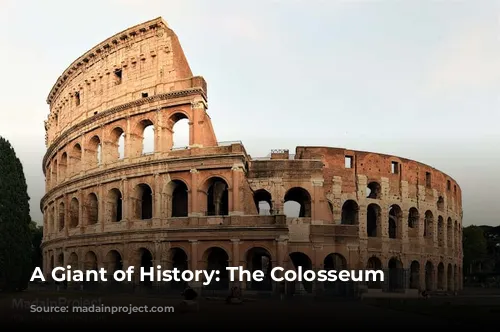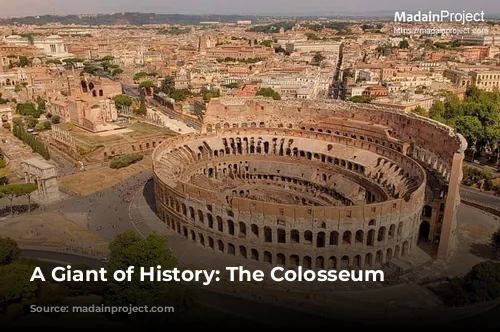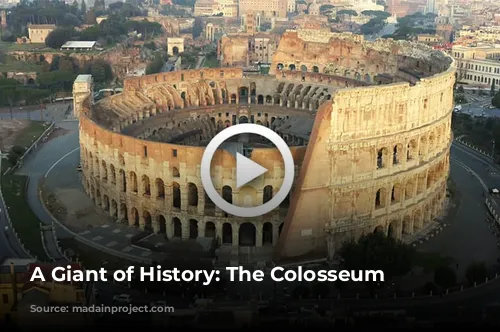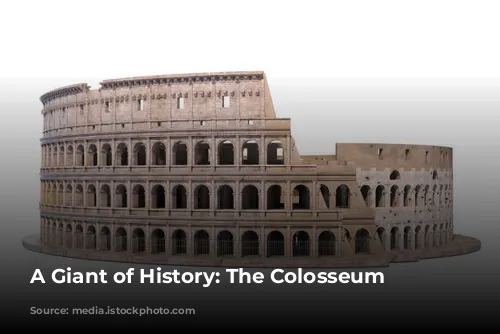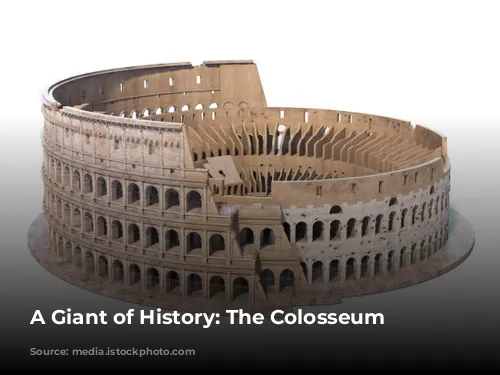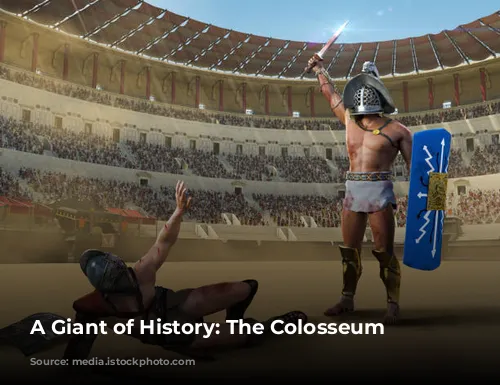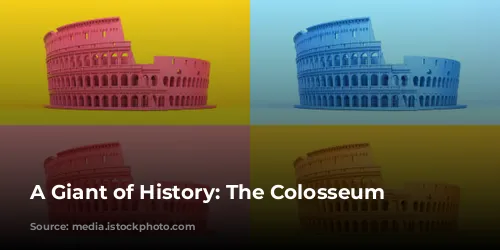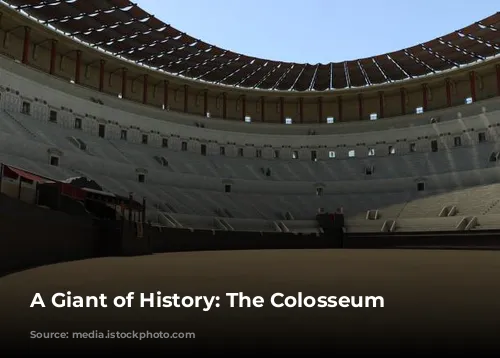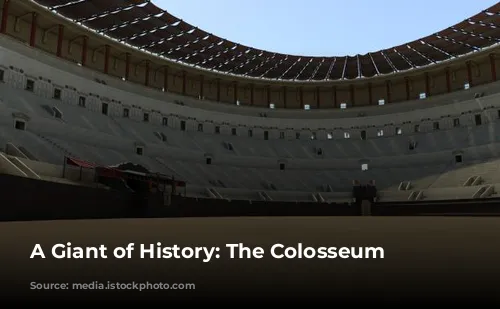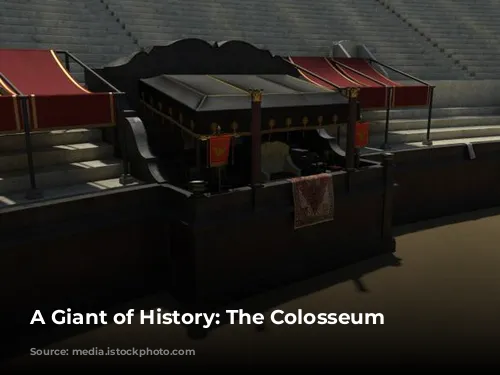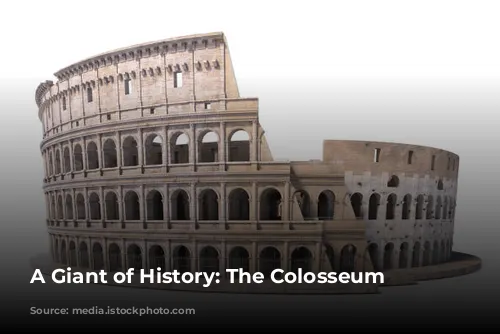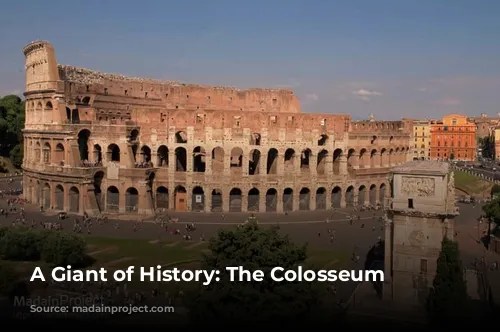The Colosseum, also known as the Colosseo, is a massive oval-shaped amphitheater in the heart of Rome, Italy. Located just east of the Roman Forum, it’s not just the largest ancient amphitheater ever built, but it remains the largest standing amphitheater in the world today, even after centuries of time.
The construction of this architectural marvel began under Emperor Vespasian in 72 CE and was completed eight years later in 80 CE by his successor, Titus. Further enhancements were made under the rule of Domitian. These three emperors, collectively known as the Flavian dynasty, were the patrons of this grand project, and the amphitheater was originally named the Flavian Amphitheater. Its association with the Flavian family led to its later designation as the Colosseum. This iconic structure served as the stage for gladiatorial contests and a wide range of other events. These spectacles, known as munera, were always hosted by individuals rather than the state. With a strong religious element, these events were not only demonstrations of power and family prestige, but also immensely popular with the Roman populace. Another beloved type of entertainment was the venatio, or animal hunt.
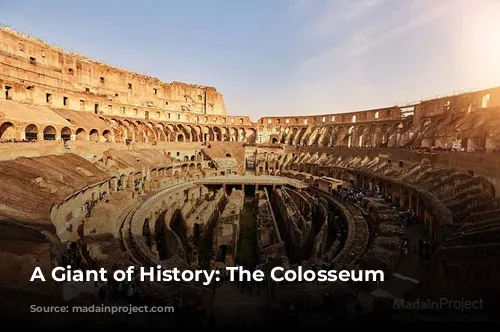
A Monument of Stone: The Colosseum’s Exterior
Unlike earlier Greek theaters that were built into hillsides, the Colosseum is a freestanding structure, entirely independent. Its basic exterior and interior architecture draw inspiration from two Roman theaters placed back-to-back, forming an elliptical plan. The outer wall, towering at 48 meters (157 feet) high, was constructed with over 100,000 cubic meters (3.5 million cubic feet) of travertine stone, meticulously fitted without mortar and held together with over 300 tons of iron clamps. Over time, the Colosseum has endured significant damage, with sections collapsing due to earthquakes. Thankfully, the north side of the perimeter wall still stands today. The surviving portion of the outer wall’s impressive façade boasts three tiers of arcades, one atop the other, capped by a podium supporting a tall attic. This upper section is punctuated by windows strategically spaced at regular intervals.
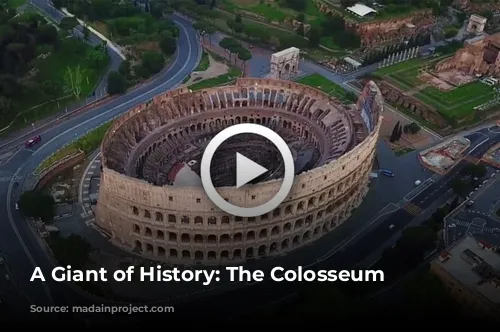
Beneath the Surface: The Colosseum’s Interior
The Colosseum’s interior comprises three primary sections: the hypogeum, the arena floor, and the cavea. The cavea, which housed the spectators, is further divided into several integrated structures. The arena, the heart of the action, is a large oval, measuring 87 meters (287 feet) in length and 55 meters (180 feet) in width. It was surrounded by a wall rising 5 meters (15 feet) high, upon which tiers of seating were constructed. The arena’s surface consisted of a wooden floor covered with sand, aptly named “arena” in Latin. Beneath this surface lay a complex underground system known as the hypogeum, meaning “underground.” Emperor Domitian ordered the construction of the hypogeum after the initial construction of the Colosseum was complete. While little remains of the original arena floor, the hypogeum is still clearly visible today.
The Colosseum, a testament to Roman engineering and architectural brilliance, continues to awe visitors from across the globe. This monumental amphitheater, a symbol of a bygone era, whispers tales of gladiatorial combat, animal hunts, and the vibrant life of ancient Rome.
